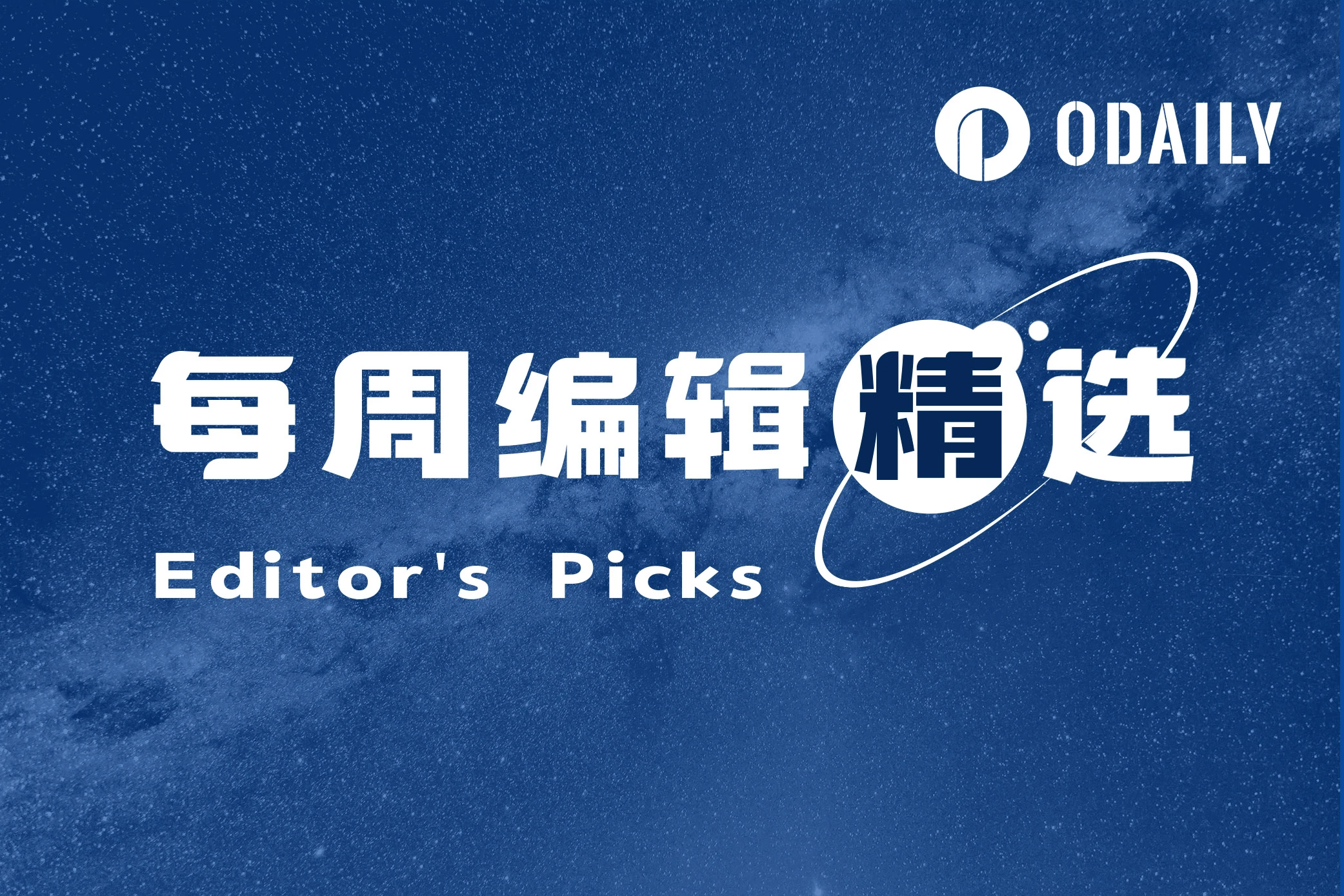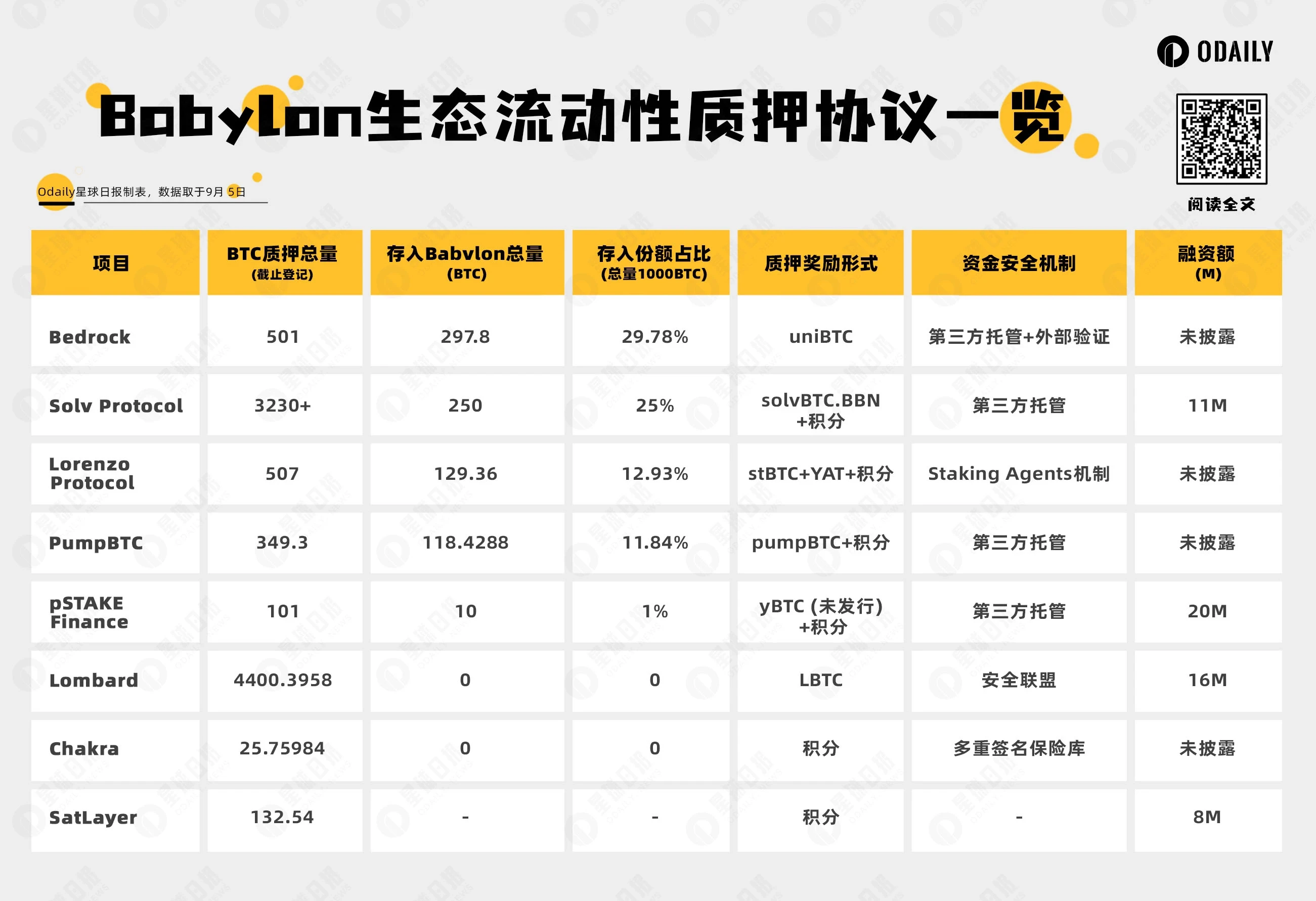Weekly Editors Picks is a functional column of Odaily Planet Daily. In addition to covering a large amount of real-time information every week, Planet Daily also publishes a lot of high-quality in-depth analysis content, but they may be hidden in the information flow and hot news, and pass you by.
Therefore, every Saturday, our editorial department will select some high-quality articles that are worth spending time reading and collecting from the content published in the past 7 days, and bring new inspiration to you in the crypto world from the perspectives of data analysis, industry judgment, and opinion output.
Now, come and read with us:

Investment and Entrepreneurship
Projects that take a long time to raise funds will have a longer time interval to get the next round of financing and receive less financing. A large number of investments and financing will emerge only one month after the market surges. This year, token issuance through public sales has dominated, accounting for 81% of all token issuances since the beginning of the year. There is not even a track that has more private placement projects than public sales projects.
XEX Research Institute Trading Review: 7 Common Mistakes in Technical Analysis (TA)
Not setting stop losses, over-trading, revenge trading, being stubborn, ignoring extreme market conditions, forgetting that technical analysis is a probability game, and blindly following other traders.
Conversation with Pacman: The first principles of building; the dilemma of incentives and solutions
The problem with OpenSea and other NFT markets is that they position their customers as consumers, and they really think that NFT is a product that you like to buy, hold, and buy. Pacman believes that a large part of users should be defined as traders. (Odaily Planet Daily Note: Just like what Pump is doing now, the community culture characteristics of Meme are removed, and users only focus on trading tokens with various different names.)
The problem with designing an incentive system is that it is difficult to avoid being manipulated (referring to large-scale Sybil attacks). In conventional retroactive airdrops, users will do a bunch of random operations, which Pacman believes is a huge waste.
Liquidity cannot be faked like the number of addresses, and whether Farmer exists or not, it provides liquidity for the entire ecosystem, so Blur only incentivizes one thing, which is liquidity.
The significance of the points program is that the project party can directly guide users (avoiding users random operations) and accurately track users performance.
Blast still targets the gap in the market: passive sound of underlying assets and gas income of developers.
The big cycle of the crypto market has not yet begun and is still waiting for a fundamental innovation.
L2, Solana or Appchain? Which is the best choice for deploying applications?
While general-purpose L2s and Solana each offer compelling advantages, application-specific chains present an opportunity for builders to profitably specialize and compete with the scale and composability of general-purpose L2s, Solana, and other L1s.
As the modular ecosystem expands, application-specific chains will play a key role in the growth of popular applications. However, this vision strictly depends on establishing a standard for interoperability solutions as soon as possible.
Meme
Developers earn $30,000 a day. What is EtherVista, which claims to be the new standard for DEX?
VISTA comes from EtherVista, a DEX that has just been running on Ethereum for one day. It calls itself the DEX that challenges Uniswap and is called Pump.fun on Ethereum by some token holders. Currently, several tokens have been deployed and issued on EtherVista.
The article introduces EtherVista and provides a hands-on tutorial.
Vista grows 100 times a day, check out 7 platforms with great potential for one-click coin issuance
The article introduces the Ethereum version of pump.fun killer Ethervista, the Meme trend maker SunPump in the TRON ecosystem, the joint curve controller Burve Protocol across the Base and BNB dual-chain ecosystems, the Bitcoin ecosystems pump.fun Ticket.fans, and Dexlab, Whales.meme, and Makenow.meme on Solana.
Bitcoin Ecosystem
Fractal, OP_NET, AVM, BRC 100, Programmable Runes, what other expansion plans does BTC have?
This article introduces the highly popular Fractal Bitcoin and programmable solutions for BTC metadata protocols such as BRC 20, CBRC, and ARC 20.
Taking stock of the eight major Babylon ecosystem liquidity pledge protocols, who is the TVL leader?

Also recommended: BTC Anchor Coin Research Report: Exploring the New Value of Bitcoin .
Ethereum and Scaling
Multicoin talks about Ethereum: What went wrong with ETH?
Ethereums $300 billion market cap has put its growth at risk of a gravity effect, and the lack of clarity in its value capture mechanism has further dragged down its performance. It advocates dispersing value in productive assets rather than relying on unproductive assets such as Bitcoin or gold. It also emphasizes that the global nature and permissionless consensus of blockchains such as Ethereum enable it to provide a unified API to manage multiple assets.
Interoperability issues and independent standards between Ethereum Layer 2 solutions weaken L1s value capture capabilities. Ethereums decision to outsource MEV and execution to L2 was a wrong one.
Ryan believes that decentralization is crucial in terms of censorship resistance and inflation resistance, and therefore supports the Rollup-centric approach. Kyle believes that Ethereum should focus more on building a permissionless financial system, and over-optimizing node decentralization is not the best strategy, especially at a time when stablecoin issuers and centralized exchanges play a key role in connecting encryption and traditional finance.
Solana aims to become the worlds largest financial exchange, prioritizing user experience and permissionless access, while Ethereum focuses more on decentralization and the distribution of validators. Although Ethereum has advantages in regulatory status and human capital, limitations in system design may hinder the realization of these advantages.
The author disagrees with judging the success or failure of Ethereum solely from the perspective of market value; he recognizes that Ethereum is a social experiment and hopes to create a decentralized, authoritative and even trustless cyber immigrant country, as well as its expansion direction of L2 based on Rollup.
The real problem facing Ethereum is that the competition between Restaking and the L2 expansion plan has diluted the resources for ecological development and reduced ETH’s value capture ability. The key opinion leaders of the Ethereum system are becoming more aristocratic, and because they are too cautious about their reputation, they lack enthusiasm for ecological construction.
Ethereum expansion economic account: Is it worth giving the bulk of sorting revenue to L2?
The core business of blockchain is selling block space. Since block space is difficult to exchange between different chains, they almost form a monopoly. However, not all monopolies can obtain excess profits. The key lies in whether prices can be differentiated for consumers. Although the sorter can profit from it, the DA layer cannot participate because it has no ability to differentiate prices. This makes it almost impossible for rollups to scale without affecting the revenue of the Ethereum network.
The Rollup-centric roadmap is inherently flawed because it abandons the valuable part of the network (ordering) in the mistaken belief that it can be compensated by the worthless part (DA).
If you believe that the long-term value of ETH lies in being a monetary asset, then this may still be feasible. By getting more people to hold ETH, it becomes a durable form of money. And subsidizing L2 without accumulating value to the base layer may promote this.
But if you believe that the long-term value of ETH lies in being a network stake in a widely used protocol (which I think is more likely than ETH as money), then value accumulation needs to happen. Clearly, we are missing the mark here due to faulty economic assumptions.
How to objectively evaluate Ethereums Layer 2 strategy?
The space utilization rate of Blobs (about 80%) is not saturated enough, which makes it impossible for the blob fee market to FOMO. The usage fee rate of Blobs and the DA cost of Layer 2 projects currently only account for 0.3% of their total revenue, which is not high. The fee reduction was successful, but the current user volume and transaction volume of Ethereum Layer 2 cannot deliver value to L1. All the contradictions are on the user and ecological scale that Layer 2 urgently needs to grow.
Also recommended: The great debate on L2s ability to feed back value: Can ETH reverse the inflation trend? Why did the revenue of Ethereum L1 network drop sharply? In-depth study of ETH staking economics: How to design the staking yield curve?
EigenDA: Reshaping Rollup Economics
The article takes an in-depth look at EigenDA, exploring the unique mechanisms that make up its design, while examining the competitive landscape to analyze how this market sector is likely to play out. EigenDA has taken a strong position in the market share of data availability service providers.
Multi-ecology
The superficial reason for the two recent block production interruptions on the TON network was the block production stagnation caused by the surge in DOGS transaction volume; the underlying reason was the design limitations of the TON network (the complex shard chain architecture), the limitations of the consensus mechanism, and the insufficient number of validators.
Readers with a certain basic understanding are recommended to directly read the fourth part How much success and failure experience can the TON ecosystem learn from WeChat.
DeFi
OKX Ventures: A detailed explanation of the six core asset markets in the RWA track
RWA is one of the fastest growing DeFi sectors, with TVL doubling in 2023 and on-chain asset value growing by 50% since the beginning of 2024, reaching $12 billion (excluding stablecoins). The fastest growing and largest sectors are the private credit market (76%) and U.S. debt products (17%), while the rest are precious metal stablecoins led by gold, real estate tokens, etc.
Currently, nearly 15 mainstream issuers offer more than 32 tokenized U.S. debt-related products, with total assets exceeding $2 billion, a 1,627% increase from the beginning of the year. The six mainstream on-chain credit protocols Figure, Centrifuge, Maple, Goldfinch, TrueFi, and Credix have a total active loan amount of $8.88 billion, a 43% increase from the beginning of the year.
Following the successful adoption of stablecoins on-chain and the attractive net interest margins earned by off-chain centralized issuers, the next phase of RWA evolution will be driven by tokenized U.S. Treasury issuance, where token holders capture the lion’s share of the net interest margin by investing directly in real-world assets that are short-term, liquid, and backed by the U.S. government.
The on-chain private credit lending market faced major challenges after the collapse of centralized financial bad debts, and is now experiencing a recovery driven by the RWA narrative. Although the total amount of on-chain credit currently accounts for less than 0.5% of the traditional $1.5 trillion private credit market, the sharp upward trend indicates that the on-chain credit field has great potential for further expansion.
The application scenarios of real-world asset tokenization in the traditional financial field involve a large number of asset issuance, transactions and other operations. For financial institutions that control core assets, compliance and security are the main demands. RWA needs to exist in trusted finance or verifiable finance and needs to be a regulated cryptocurrency. Especially in the context of stablecoins, they still require a large amount of participation from off-chain intermediaries for auditing, compliance and asset management, all of which require a trust foundation.
Is the popular Polymarket a good forecasting tool?
Polymarket is still an inefficient emerging market that cannot predict small changes in the probability of events (<5%). The inaccuracy problem can be solved through better liquidity and the use of prediction tokens.
NFT, GameFi, SocialFi
Web3 Social Myth: Confusion between Social and Community, Disastrous X to Earn Model
Social interaction is the most basic social behavior, and the most basic function to realize social interaction is communication. Even for the most complex social products, the core function is communication, and then new services are continuously integrated to evolve into community products.
A complex organism formed by the social behaviors of many people and groups is a community. A social networking service centered on relationships is actually a communication product driven by finding the right people, but it is only when the product is truly regarded as a communication list that it can be considered a true social network.
The root of the confusion about social products is that people only focus on the most superficial functions of the products and fail to restore the real driving force and evolution of the products. We should perhaps put aside our fundamentalist prejudices and re-examine the vitality of Web2.5 products such as Farcaster, which in turn comes back to the ability to do social networking and community. The effort actually lies beyond technology.
The essence of monetization is the points mall, except that the points are not exchanged for goods purchased with real money, but for market value expectations in the secondary market. Monetization shifts the users motivation from the product itself to the incentive. When the incentive weakens, the users motivation to use the product disappears. Monetizing user behavior is only applicable to those rigid payment scenarios.
There are two paths for Web3 Social to be established: either, like Farcaster and Telegram, first carefully cultivate a crypto community product, and then support some Web3 functions in the form of plug-ins, and the crypto community will naturally give birth to various wealth effects; or, like ENS and Lens Protocol, continue to explore some innovative middleware at the protocol layer. Although it seems to be of little use at this stage, it can be used as a technical reserve and may be integrated into large-scale Web2 social applications in the form of plug-ins in the future. The new interaction model brought about may also give birth to new application scenarios (such as deriving a new credit assessment mechanism based on ENS).
Safety
Web3 Security Beginners Guide to Avoiding Pitfalls: Fake Mining Pool Scams
Be wary of unrealistic profit promises: If an investment opportunity promises returns that are too good to be true, it is often a scam.
Do not authorize casually: Avoid clicking on unknown links and performing authorization operations.
Be skeptical: Carefully verify the authenticity of the group, and do not judge its credibility based solely on the number of people in the group. Be skeptical of operations involving fund transfers, and confirm the authenticity of the activities from multiple sources.
Hot Topics of the Week
In the past week, in terms of opinions and voices, Pavel Durov: Telegram is ready to withdraw from markets that are incompatible with the platform ; We are not here to make money, but to defend peoples basic rights ; Coinbase CEO: We have witnessed the first AI-to-AI crypto transaction , and the AI economic market is huge; Vitalik: DEX is more convenient than CEX , and users are not restricted by accounts and deposits and withdrawals; Ethereum has never been sold for personal profit since 2018 ; There is no plan to invest in L2 or other token projects in the future , and only donations will be made to valuable projects; The current budget strategy of the Ethereum Foundation is to spend 15% of the remaining funds each year; Binance CEO confirmed: CZ has been permanently banned from managing or operating Binance ; Matrixport: Bitcoin price fluctuations bring opportunities under the general election and economic uncertainty ; Grayscale: If the US dollar weakens and interest rates continue to fall, it will be good for Bitcoin ; Arthur Hayes: Bitcoin is expected to fall below $50,000 this weekend and has been shorted;
In terms of institutions, large companies and leading projects, the Coinbase team is building an SDK that can give bot/AI agents staking, predict market betting and other functions; Scroll may hint at an upcoming airdrop ; Grass is online for airdrop inquiries ; Aleo announced the details of the incentive plan , and the incentive distribution targets include the ambassador plan, test network, and zkML incentives;
According to the data, Vitaliks ETH holdings have decreased by 85,000 compared with three years ago, but he still holds ETH worth $592 million; Ethereum exchange reserves have fallen to the lowest level since 2016; 40% of Telegrams revenue comes from cryptocurrency;
In terms of security, the Penpie hacker exchanged the stolen assets for more than 11,000 ETH, part of which has been transferred to Tornado Cash; Pendle : After the Penpie incident, approximately US$105 million was effectively protected, and the platform has now resumed normal operations... Well, its another week of ups and downs.
Attached is a portal to the “Weekly Editor’s Picks” series.
See you next time~










